Garden parasol purchasing advice: how to choose the right product
- What You Need to Know
- A sunshade is a flexible and inexpensive sun protection alternative to an awning or sun sail.
- The covering of the sunshade determines the degree of UV protection. Generally, dark colours have a higher UV protection than light colours.
- Impregnated parasols are water and weather resistant.
- A bend or tilt mechanism ensures that you can adjust the parasol to the current position of the sun.
Plenty of sun, but not too much
As soon as the days get longer and the temperatures rise, many people are drawn outdoors. No wonder, after all, sunlight not only increases general well-being, but is also responsible for the production of the vital vitamin D. Among other things, the sun vitamin is involved in the production of the happiness hormone serotonin – in short: sunshine puts people in a good mood. However, as with so many things, too much of it is not advisable. Those who expose themselves to direct sunlight for too long without sunscreen risk painful sunburn or sunstroke. In the long run, UV radiation even accelerates the ageing of the skin and increases the risk of skin cancer. In addition, the glare of the sun and the heat quickly become unpleasant.
Mobile shade dispensers
If you want to enjoy warm summer days outdoors without exposing your skin to harmful UV rays for too long, you need a parasol. It provides pleasant shade and, in contrast to fixed awnings or sun sails, can be used flexibly. You can set up the parasol on your terrace, for example, to drink coffee with the family in the shade. If you want to relax and read a book on the lawn in the garden without the sun blocking your view, take the parasol with you. The same applies to the balcony. If there is no room for the umbrella stand, attach the parasol to the balcony railing. A compact folding parasol is also easy to take to the park, the open-air swimming pool or the beach.
Special applications
Parasols provide shade not only on the balcony, in the garden or at the beach. There are also special models for use on prams or wheelchairs. They are attached with a suitable umbrella holder and protect the occupants not only from too much sun, but also from wind or rain. It also makes sense to use a parasol on a boat. Among other things, there are models for sailing, motor and inflatable boats.
The right parasol for every purpose
The most common types of parasol for private use include the traffic light parasol, the market parasol and the half parasol. What they have in common is that they consist of a covering on spokes, a pole and a holder and that the covering can be folded up.
Centre pole parasols: The classic all-rounders
When you think of a parasol, you probably have a centre pole parasol, also called a centre mast parasol, in mind. It is considered a classic among parasols and is characterised by the fact that the mast is located centrally under the covering. This makes the parasol very stable and wind-resistant. Most models have a tilt mechanism that allows you to adjust the angle of the parasol roof to the position of the sun.
The choice of models is particularly extensive for mid-level parasols. They come in various sizes, colours and designs; the shape of the umbrella is square or round, depending on the model. Compared to the other types of parasols, centre-pole parasols are rather inexpensive to buy. Inexpensive models are already available from around 20 euros.
The canopy of most centre pole parasols can be compactly closed downwards so that you can store the parasol in a space-saving way and transport it comparatively easily. This makes it suitable both as a garden umbrella and balcony umbrella and for taking with you to the beach or the park, for example. For the latter, lightweight products made of aluminium are recommended.
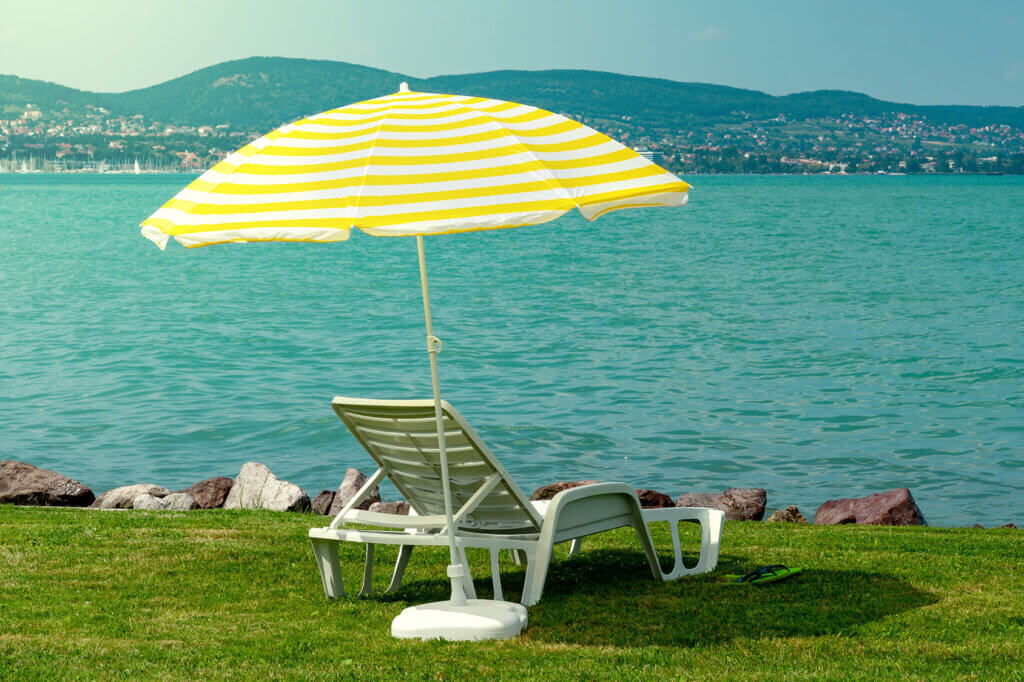
Special shapes: Market umbrellas and beach umbrellas
Beach umbrellas have a round umbrella shape and a very low weight to make them particularly easy to transport. However, this makes them less robust than other centre pole umbrellas. Market umbrellas are characterised by the fact that their canopy folds upwards. Market umbrellas are usually somewhat more robustly built and are mainly used in the catering sector.
The central mast ensures a stable stand, but has the disadvantage that there is no continuous surface under the umbrella. The centre pole umbrella is therefore less suitable for providing shade for large garden furniture. However, there are special garden tables with an umbrella hole that get around this problem. Otherwise, the best option is to choose a hanging basket umbrella.
Pro points
- Wind-resistant
- High stability
- With tilt mechanism
- Easy to transport
- Large product selection
- Inexpensive models
Drawbacks
- No continuous surface under the umbrella
Traffic light umbrellas: Large-area shade providers
The traffic light umbrella, also known as a free-arm or pendulum umbrella, is characterised by the fact that its base is not located centrally underneath the umbrella surface, but to the side of it. In the classic traffic light umbrella, the umbrella surface is attached to the top of a curved free-arm. The usually quite large umbrella surface consists exclusively of textile fabric, is typically stretched by eight spokes and has an octagonal shape. The spokes as well as the bracket are usually made of metal. Aluminium is often used, which makes the parasol particularly light. There are also products made of wood.
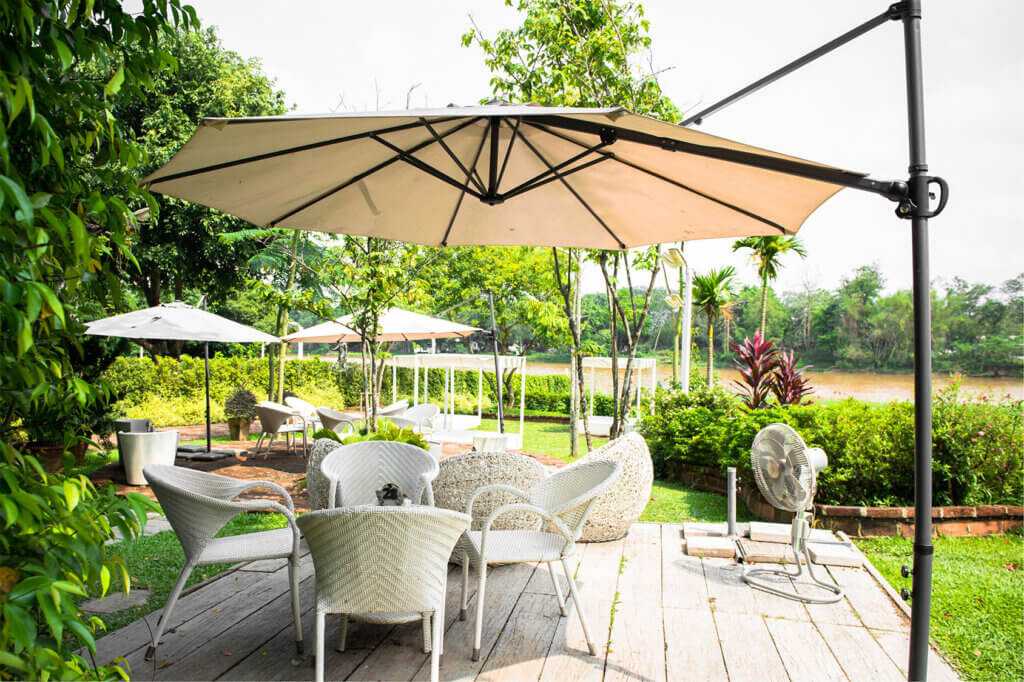
The advantage of the traffic light parasol is that the base is outside the shade so that you can use the shaded area freely. This makes it suitable for the garden or terrace, for example, to place a larger table with seating or other garden furniture underneath. In addition, most of the traffic light umbrellas have many comfort features, such as a crank for easier opening and closing or a tilt mechanism to adjust the umbrella optimally to the position of the sun.
For smaller areas, such as the balcony or the front garden, the cantilevered traffic light umbrellas are less suitable. The more complex, larger frame also makes them less mobile than the classic centre-stick umbrellas. They are also somewhat more expensive and more susceptible to wind due to their design with a lateral centre of gravity.
Pro points
- No umbrella stand in the shade
- Large shade
- Convenient additional features
- Ideal for larger areas
Drawbacks
- Partly susceptible to wind
- Comparatively high price
Half-umbrellas: Perfect for small areas
The so-called half-umbrella looks like a central mast umbrella with a halved canopy and is a rather rare species of sunshade. The range of models is correspondingly small. However, its design makes it particularly compact and thus the ideal model for small balconies or terraces where there is no room for a classic parasol. It is often referred to as a balcony parasol.
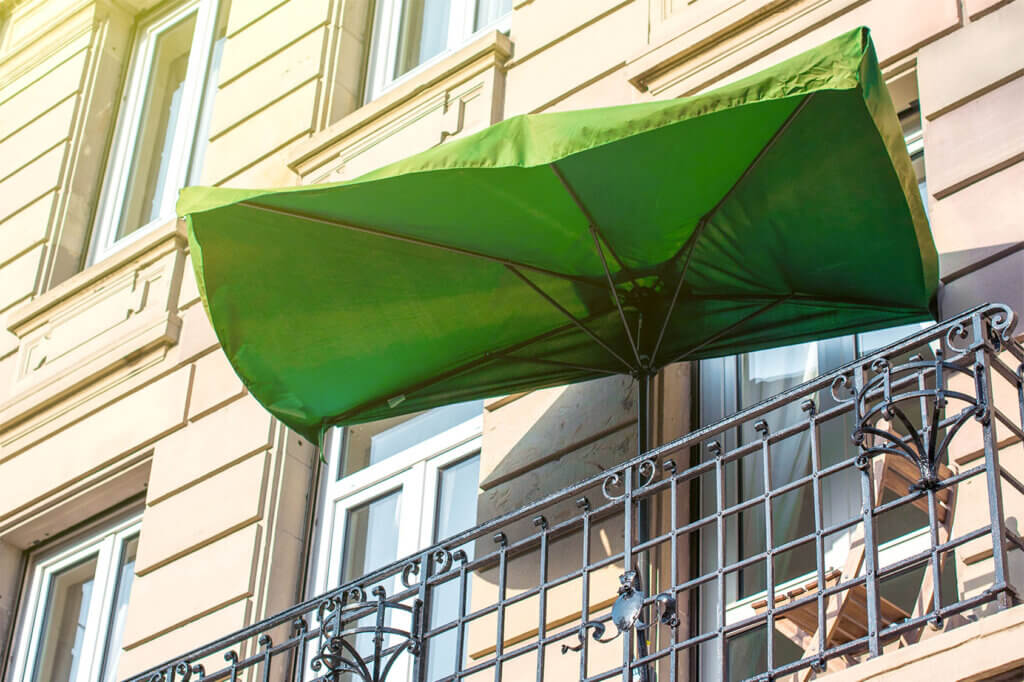
In order to be stable, the half-parasol is attached to a wall so that it looks like a canopy. This means that the possibilities for setting up the parasol are more limited than with other parasols. These products are not suitable for free-standing use, for example in the garden or on the beach. However, the space-saving models are comparatively inexpensive. Most half-umbrellas cost between 30 and 50 euros.
Pro points
- Space-saving design
- Ideal for small balconies and terraces
- Comparatively cheap
Drawbacks
- Wall mounting required
- Small model selection
Finding the right parasol
Parasols are suitable for different purposes depending on their design. The size of the parasol determines how much shade it provides and the folding size determines how much storage space it takes up. Also particularly important when buying a parasol are the coating, which is responsible for UV protection among other things, and the type of attachment.
The right dimensions
The larger the area of the parasol, the more shade it will provide. The choice of dimensions depends on where you want to set up the parasol and which area you want to shade. For round parasols, manufacturers specify the diameter of the parasol surface, for rectangular models the edge lengths. For oval shades, which tend to be the exception, double the diagonal is the usual measurement. With some manufacturers, you can also choose the size of your parasol individually.
When it comes to parasol size, you can use the following guidelines for small, medium and large areas as a guide:
| Shape | Small models | Medium models | Large models |
| Round (diameter) | 2.00 m | 3.00 m | 4.00 m |
| Rectangular (length x width) | 1.30 x 1.80 m | 2.00 x 3.00 m | 3.50 x 4.50 m |
| Square (length x width) | 2.00 x 2.00 m | 3.00 x 3.00 m | 4.50 x 4.50 m |
The right covering
One of the most important criteria for buying a parasol is its covering. It provides shade and is therefore responsible for protection. Reliable sun protection is so important because otherwise UV rays penetrate the skin surface unhindered and damage the DNA of our skin cells. The short-term consequence is a painful sunburn; in the long term, UV rays lead to skin cancer in the worst case, or at least they accelerate skin ageing.
The skin’s own protection
Our skin has the ability to protect itself from UV radiation to a certain extent. How strong this self-protection is depends on the type of skin. For example, the self-protection time for people with skin type 1 (very fair skin, freckles) is less than ten minutes, while it is 20 to 30 minutes for people with skin type 3 (medium fair skin). The skin’s ability to protect itself is only pronounced from the age of about 15.
What UV protection do sunshades offer?
Darker fabrics offer higher UV protection than lighter ones. In addition, the fibre and fabric construction has an influence on the sun protection factor of the parasol, which is referred to and stated as UPF (Ultraviolet Protection Factor). The UPF scale ranges from 15 to 50. Parasols with a UPF of 15 to 24 offer medium sun protection, while models with values of 25 to 50 offer high sun protection. Sunshades with UPF values above 50 are given the “UPF 50+” seal and offer particularly high protection. They are recommended, for example, for people with fair skin types and children whose skin’s own protection is not yet developed.
Different UPF measurement standards
The two most common standards for UV protection of sunshades are UV Standard 801 and AS/NZS. Measurements according to the UV Standard 801 are based on the most sensitive skin type and a maximum radiation intensity. In addition, the ageing and wear of the sunshade fabric as well as weather influences are included in the calculation, which makes this standard particularly reliable and close to reality. In contrast, sunshades in the AS/NZS standard only undergo the UV check when new from the factory.
Different materials and fabric classes
The material of the sunshade not only has an influence on the UV protection of the sunshade, but also on its durability. The most common materials for the sunshade are as follows:
- Polyester
- Olefin
- Acrylic
Polyester is comparatively cheap and at the same time very durable. Thanks to its strong fibre, polyester can retain its original shape well, but it is less colourfast than other covering materials. The more expensive material olefin is more colourfast and also particularly light and quick-drying. Parasols with an acrylic fibre covering, which is very lightfast and colourfast, are considered to be of exceptionally high quality and long-lasting. In addition, it does not provide a breeding ground for mould. Often, acrylic fibre coverings are impregnated and thus highly resistant to water and weather. Models made of linen or cotton are somewhat rarer and require more cleaning. You should always impregnate these before use.
To make it easier for their customers, many manufacturers, for example Glatz, divide the coverings of their sunshades into different fabric classes according to their light and colour resistance. The following overview shows guide values for the four common fabric classes I, II, IV and V. Sunshades in fabric class III are usually no longer offered, which is why this class is missing from the overview.
| Fabric class | Material | Special features | Colour change |
| I | Polyester | Very favourable | After 40 sunny days |
| II | Polyester, olefin | Favourable, higher light fastness | After 80 sunny days |
| IV | Polyester, acrylic | Very colourfast and durable | After 350 sunny days |
| V | Acrylic | Very durable and stable | After 700 sunny days |
What mounting options are available?
To provide reliable shade, it is important that the parasol has a secure footing even in strong winds. Depending on the type of parasol and the ground, different fastening options are suitable. A half parasol is best attached to the house wall with a suitable wall bracket. Small centre-pole parasols on the balcony can be easily and space-savingly attached to the railing with a bracket. For setting up on earth or sand, for example in a park or on the beach, a so-called lawn spike is suitable, which you push into the ground and then push the handle of the parasol into it. If you want to place your parasol on solid ground, such as a tiled terrace, parasol stands with a metal cross or stands with a fillable base are ideal. If you have a permanent place for your parasol, you can set a ground socket in concrete into which you insert the parasol.
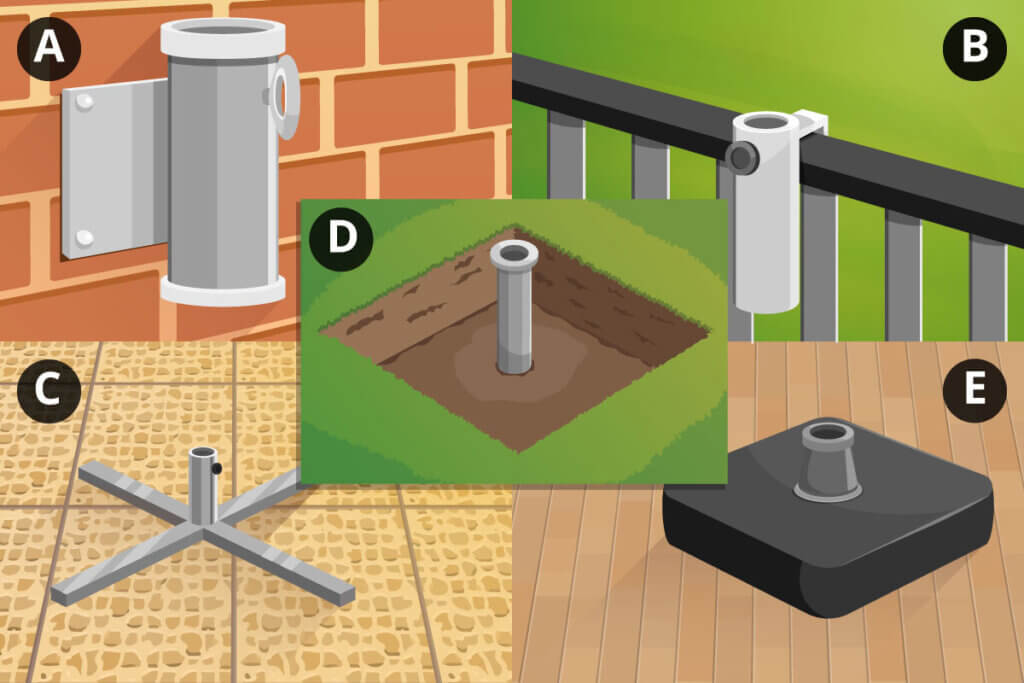
How stable is the parasol?
A wall bracket is firmly screwed to the wall before you attach your parasol to it. Accordingly, the parasol stands stable in it. If you are using a mounting for the railing, make sure that you choose a model that matches the railing and that you tighten it well. Only then will the parasol have a firm stand on the railing. Fastening with a lawn spike in the ground around sand is more suitable for short-term placement. An umbrella stand with a metal base is best weighted down with ground plates. Models with a fillable base can be filled with water or sand. The parasol is particularly stable in a ground socket set in concrete. However, it can no longer be moved.
What does a parasol cost?
The price of parasols varies depending on the type, brand, size and material. Small centre-pole parasols with a polyester covering are available for as little as 20 euros. These are usually sufficient for occasional use in the garden, on the balcony or to take with you. However, you should not expect such inexpensive models to last too long. According to Stiftung Warentest, good parasols are available from 69 euros. Most small to medium-sized parasols, which you can buy in DIY stores, for example, cost between 50 and 150 euros. Large traffic light umbrellas with coated acrylic coverings can reach prices of up to 5,000 euros. However, such models are primarily used in the professional sector, for example in the outdoor areas of restaurants or hotels.
Popular parasol brands
Schneider, Glatz, Kettler, Doppler, Knirps, Sekey
Useful extras for more comfort
A simple parasol consisting of a shade and a stand is sufficient as a reliable shade provider. If you want more comfort, for example when setting up and taking down, the following features will be of interest to you:
Opening and closing by crank

A model with a crank is particularly recommended for large sunshades. It makes it easier for you to open and close the sunshade. The crank is usually part of the standard equipment for traffic light parasols. In the meantime, however, it can also be found on many mid-level parasols. The crank is often removable so that you can store the umbrella easily and safely.
Bend or tilt mechanism
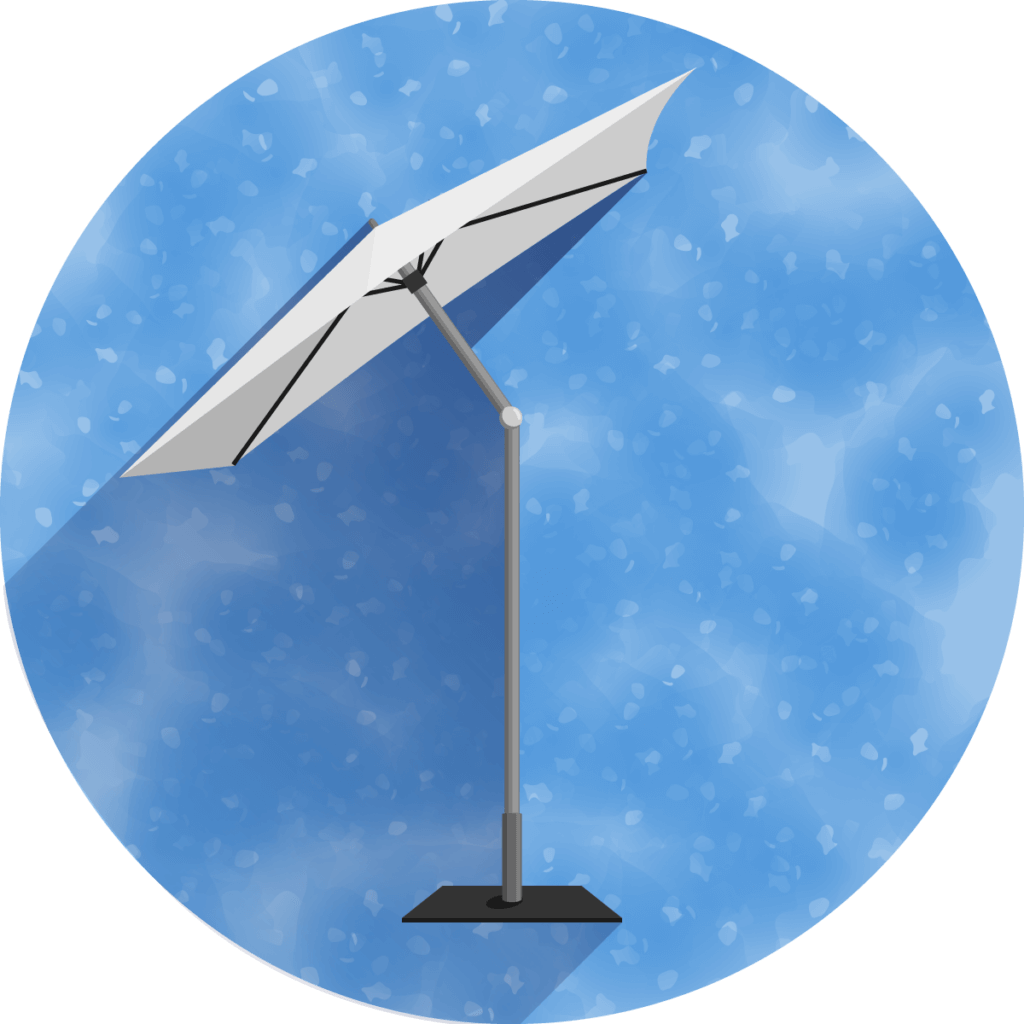
Middle pole umbrellas usually have a bending mechanism built into the pole. This makes it possible to bend the pole and thus adjust the canopy of the parasol at an angle. This allows you to flexibly adjust the parasol to the gradually sloping sun. A bending mechanism is not possible with traffic light parasols due to their design. However, the canopy of many models can be tilted by means of a free arm.
Wind opening for more stability
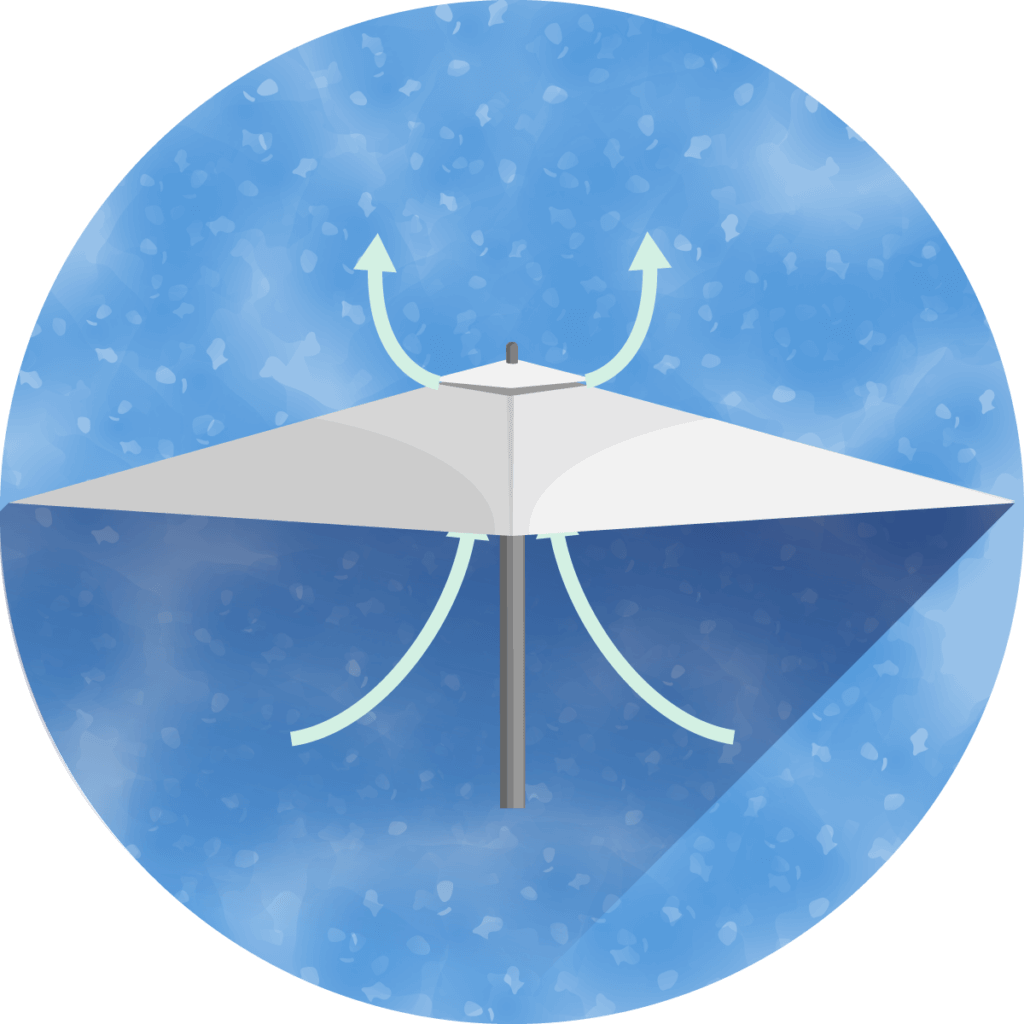
A so-called wind outlet, also known as a wind opening, improves the wind stability of the parasol. This is an additional piece of fabric that lies loosely around the tip of the sunshade. The wind outlet ensures pressure equalisation in gusts and thus reduces the swaying, swaying and swaying of the parasol. Especially the traffic light umbrellas, which are particularly susceptible to wind, are often equipped with such a device.
Lighting with solar module
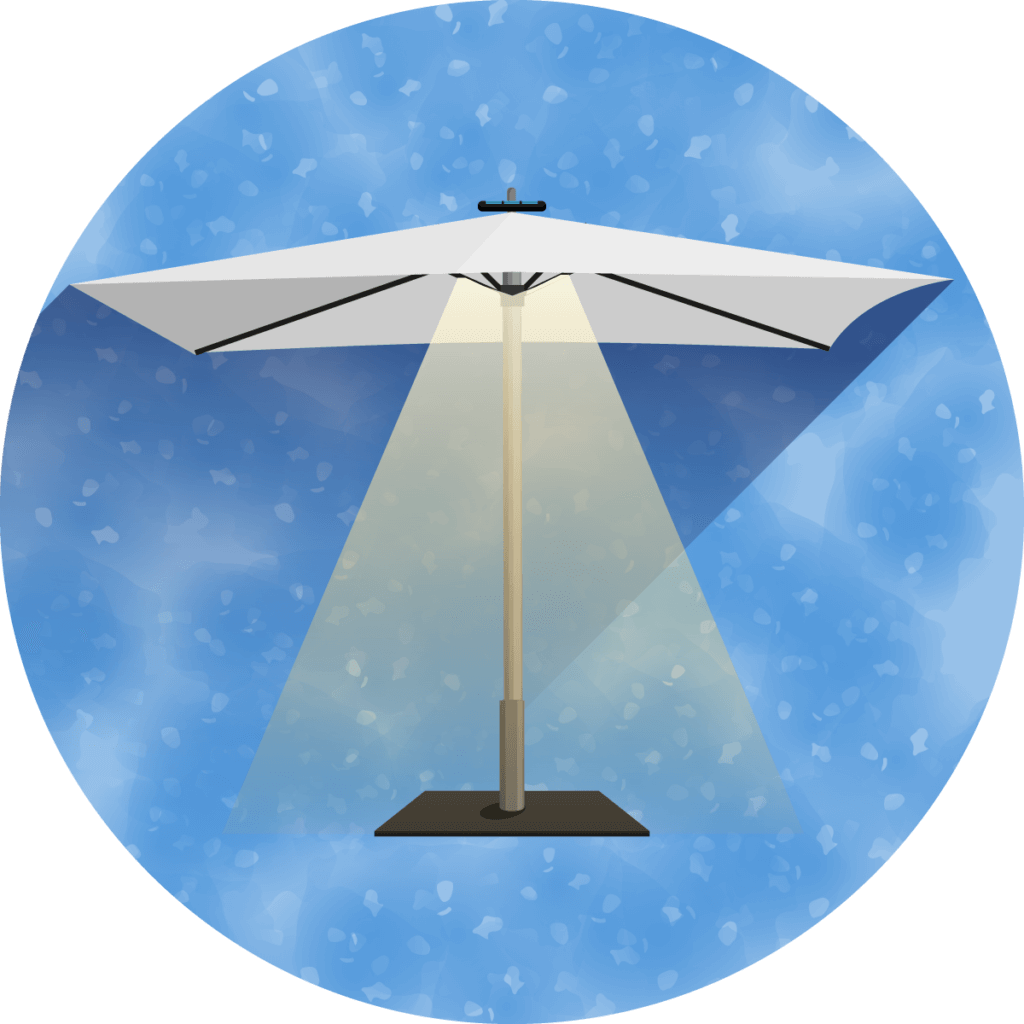
If you want your parasol not only to provide shade during the day but also light at dusk, a parasol with lighting is the right choice. Some models are equipped with LED lighting and a solar module. This allows you to charge the battery of your lighting while you are sunbathing, so you are not left in the dark on your patio in the evening.
Cleaning and care tips
Have you already found the right parasol for your needs? Then the following tips will help you to clean and care for your parasol so that it remains reliably ready for use for as long as possible.
How do I clean the parasol?
Dirt such as leaves and bird droppings are best removed directly after each use so that they do not dry on the parasol. It is usually sufficient to brush the parasol dry or wipe it with a cloth. Remove more stubborn stains carefully with lukewarm water, a little mild soap and a soft brush. Then rinse the fabric with clean water. Aggressive cleaning agents should not be used, as they can attack the impregnation of the parasol. Some parasols have a removable cover that can be washed in the washing machine. However, be sure to read the washing instructions for the fabric. With the parasol stand and pole, it is usually sufficient to wipe both parts regularly with a damp sponge or cloth. Before closing and storing the parasol, it is important to let it dry completely. Otherwise, mould stains or even mildew can form.
Getting the parasol through the winter well
Before you send your parasol off for the winter break, you should clean it thoroughly and let it dry completely. To ensure that it survives the winter well, we recommend that you pull a protective cover over the parasol. It protects the parasol from moisture, cold and the weather. With some models, a suitable cover is conveniently included in the scope of delivery. If you purchase the protective cover later or separately from the parasol, you should make sure that it fits the parasol exactly.
For storage, we recommend a protected, dry place, such as in the cellar or garage. You should not overwinter your parasol outdoors if you do not want to reduce its lifespan. In addition, the manufacturer’s warranty becomes invalid in this case. Parasols with a removable canopy are an exception. You can leave your parasol frame outside without any problems while you store the parasol cover in the dry. Such parasols are mainly used in the catering industry.
Renewing the impregnation
Impregnation makes the parasol highly dirt and water repellent. This makes cleaning easier and contributes to a longer life of the parasol. Some manufacturers sell their models already impregnated. If this is not the case, you should treat your parasol with a suitable impregnation spray before using it for the first time. Please note that the impregnation wears off over time, especially if the parasol is used frequently. Accordingly, you should renew it regularly.

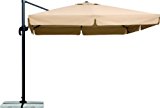
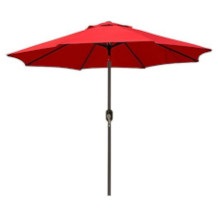
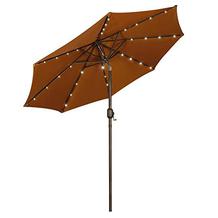
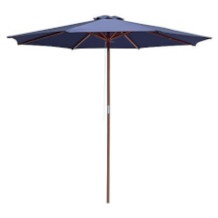
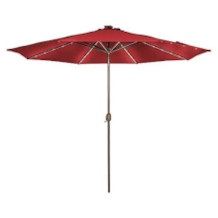

 15,066 reviews
15,066 reviews
